
Using the EPA’s data, we mapped the spread of cancer-causing industrial air emissions down to the neighborhood level. Look up your home to see if you and your loved ones are living in a hot spot.

It’s not a secret that industrial facilities emit hazardous air pollution.
A new ProPublica analysis shows for the first time just how much toxic air pollution they emit — and how much the chemicals they unleash could be elevating cancer risk in their communities.
Although lung cancer is traditionally thought of as a 'smoker's disease,' a surprising 15-20% of newly diagnosed lung cancers occur in people who have never smoked, many of whom are in their 40s or 50s.

Doctors say this concerning rise in non-smoking lung cancer cases is likely linked to long-term, high exposures of radon gas. This colorless, odorless gas is emitted from the breakdown of radioactive material naturally occurring underground that then seeps through building foundations. The gas can linger and accumulate in people's homes and lungs silently unless they know to test for it.
Most infection prevention guidelines center on the hospital environment rather than the patient. But the source of antibiotic-resistant microbes is often from the patient’s own body.

Research comparing bacteria in the microbiome – those colonizing our noses, skin and other areas of the body – with the bacteria that cause pneumonia, diarrhea, bloodstream infections and surgical site infections shows that the bacteria living innocuously on our own bodies when we’re healthy are most often responsible for these bad infections when we’re sick.
Our results revealed that while the species of bacteria living on the back skin of patients vary remarkably between people, there are some clear patterns. Bacteria colonizing the upper back around the neck and shoulders are more similar to those in the nose; those normally present on the lower back are more similar to those in the gut and stool. The relative frequency of their presence in these skin regions closely mirrors how often they show up in infections after surgery on those same specific regions of the spine.
In fact, 86% of the bacteria causing infections after spine surgery were genetically matched to bacteria a patient carried before surgery.
Electronic wearables and sensors could one day be made from a material that toughens up as it gets hit or stretched, thanks to new research carried out by a team from the University of California, Merced.
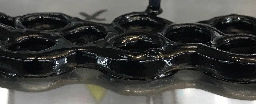
The new material was actually inspired by the corn starch used in cooking, which can be stirred when water is added. Unlike wet sand, which has a consistent viscosity whether mixed or punched, cornstarch slurry acts like a liquid when stirred gently and like a solid when punched quickly.
Personalized electronic prosthetics are another potential use case, and something the researchers have already experimented with. Eventually, artificial limbs could be 3D printed from this versatile material.
It's another reminder of the potential for new materials to be discovered and existing materials to be refined, and how they might change our futures – from the devices we use to the clothes we wear.
The new science of "exposomics" shows how air pollution contributes to Alzheimer’s, Parkinson’s, bipolar disorder and other brain diseases
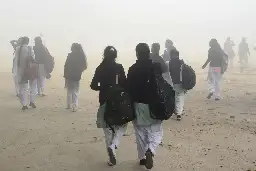
The new science of "exposomics" shows how air pollution contributes to Alzheimer’s, Parkinson’s, bipolar disorder and other brain diseases
These particles, known as PM2.5 (particles less than 2.5 micrometers in diameter), can affect the lungs and heart and are strongly associated with brain damage.
A recent study showed that pesticides, paints, cleaners, and other personal care products are another major—and under-recognized—source of PM2.5 and can raise the risk for numerous health problems, including brain-damaging strokes.
Untangling the relationship between air pollution and the brain is complex. In the modern industrial world, we are all exposed to literally thousands of contaminants.
In the mid-19th century, they were first observed as small spheres in the blood, and by the turn of the century, their function in blood clotting, known as haemostasis, and the development of thrombosis were discovered. A few years later, the site of their formation in the bone marrow was also identified, where platelets are shed from their giant precursor cells, the megakaryocytes.
The biology of these small, nucleus-free cells, which are only one-thousandth of a millimetre in size and of which we have about 250 million in every millilitre of blood, has gradually evolved into a major research area.
It has become obvious that platelets have a plethora of functions beyond stopping bleeding or triggering heart attacks. As modulators of the immune system, they also drive inflammatory processes and thereby promote tissue damage in many disease settings.
The arid regions in the desert belt of the northern hemisphere extend from the Sahara in western Africa to the Middle East and the deserts of China. Millions of people in these regions suffer from the effects of dust on their health, flora, economy and climate.
In total, dust particles with a mass of around 1500 megatons are released into the atmosphere every year. The Sahara is thought to be the main source with around 1000 megatons.
Mineral dust plays a major role in the global climate because the dust particles floating in the atmosphere reflect sunlight and dim the sun's rays reaching the ground. In addition to this direct effect, there is also a so-called indirect aerosol effect: the particles act as cloud nuclei and influence cloud formation, which also has an impact on the Earth's radiation budget and can cool or warm depending on the type and height of the clouds.
In addition, there are many other effects whose significance has only been slowly understood in recent years: Chemical reactions can take place on the surface of the dust. Trace metals in mineral dust fertilize the ocean and thus drive many biogeochemical processes in the sea. Large dust outbreaks can affect local infrastructure such as photovoltaic systems.
Added to this are the effects on people's health, some of whom suffer from severe dust storms: Dust has a negative impact on the respiratory tract and can also transport bacteria and thus diseases.
Asthma is deemed an inflammatory disease, yet the defining diagnostic feature is mechanical bronchoconstriction.
Our findings show that bronchoconstriction causes epithelial damage and inflammation by excess crowding-induced cell extrusion and suggest that blocking epithelial extrusion, instead of the ensuing downstream inflammation, could prevent the feed-forward asthma inflammatory cycle.
Using transparent electrodes and electric fields, EDS technology can electrically lift and remove dust from a variety of surfaces for space applications

Lunar regolith dust can get into gaskets and seals, into hatches, and even into habitats, which can pose a lot of issues for spacecraft and astronauts.”
Unlike dust particles on Earth, dust on the Moon’s surface is sharp and abrasive – like tiny shards of glass – because it hasn’t been exposed to weathering and elements like water and oxygen.
Simply brushing lunar regolith across surfaces can make the problem worse because it’s also very electrostatically charged and highly insulating.
For the past 20 years, Jharkhand's Samit Kumar Carr has helped families of workers who died due to incurable silicosis get a compensation of Rs 13 crores.

She worked in a ramming mass industry. As part of this, she would be exposed to silica dust all day. I remember that whenever she would come home in the evening, she would be completely covered in dust — her hair, clothes, all her body. It would get a little difficult for us to recognise her. Sadly, Laxmi’s mother could not be saved. “She was just 33. All this pain was for Rs 80-100 wage per day.
Silicosis is an incurable lung disease caused by the inhalation of dust containing silica crystals found commonly in quartzite, granite, basalt, sandstone, agate, slate marble, and building materials like fire bricks and tiles. This exposes workers in dust-generating sites like factories, mining and construction sites to a high risk of contracting the disease, which leads to prolonged illness and painful death.
As attention has been riveted on coal miners suffering from black lung disease, it’s important to realize that steel workers are also among those facing similar fates due to silica exposure.
Silica, the most abundant mineral in the earth’s crust, poses a significant health risk when its dust is inhaled during various industrial activities such as chipping, cutting, drilling, or grinding natural materials like soil, granite, slate, sandstone, among others.
Exposure to silica dust poses a significant risk of developing various progressive diseases. Inhalation of these tiny particles over time can lead to scarring and inflammation in the lungs,resulting in the formation of lung nodules, which could indicate the presence of lung cancer.
Moreover, the scarring can progress to the extent of stiffening the lungs, causing difficulty in breathing and ultimately leading to conditions such as pulmonary fibrosis or COPD. Additionally, silica exposure increases susceptibility to bacterial infections, including tuberculosis.
Quartz is used for countertops in millions of homes around the world — the manmade stone is popular for its beauty and durability. But for workers who make, cut and install quartz counters, it can be deadly. The World reported from Turkey, Spain and Australia — three stops along the quartz counterto...
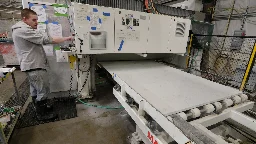
Quartz is used for countertops in millions of homes around the world — the manmade stone is popular for its beauty and durability. But for workers who make, cut and install quartz counters, it can be deadly. The World reported from Turkey, Spain and Australia — three stops along the quartz countertop supply chain — to learn more about silicosis, an incurable and often fatal lung disease caused by inhaling dust laden with excessive amounts of a mineral called silica.
Each worker received a filtered face mask every six months. But one by one, Girgin’s coworkers still fell ill with silicosis—a lung disease caused by breathing in dust from silica-laden materials. The immune system typically produces mucus as a protective measure, but eventually, the mucus clogs the lungs, which inevitably leads to suffocation.
Growing up in Çine, Girgin saw a neighbor get sick and die within a year.
There is no cure for silicosis.
Breathing in silica raises the risk of developing silicosis, which OSHA describes as "an incurable lung disease that can lead to disability and death." Inhaling the substance also raises the risk of lung cancer, chronic obstructive pulmonary disease or COPD and kidney disease, according to the agency.
Breathing carbon monoxide can cause a host of problems, including nausea, dizziness, weakness and disorientation.
It has often been likened to talcum powder. The ultra fine lunar surface material known as the regolith is crushed volcanic rock. For visitors to the surface of the moon it can be a health hazard, causing wear and tear on astronauts and their equipment, but it has potential. The fine material may be...

It has often been likened to talcum powder. The ultra fine lunar surface material known as the regolith is crushed volcanic rock. For visitors to the surface of the moon it can be a health hazard, causing wear and tear on astronauts and their equipment, but it has potential. The fine material may be suitable for building roads, landing pads and shelters. Researchers are now working to analyze its suitability for a number of different applications.
One of the first priorities would be to establish a suitable permanent landing area on the moon. Without it, every time a lander arrives, the fine regolith will get kicked up and disturbed and may very well play havoc with other equipment in the vicinity. The particles can be quite sharp too so it may be quite abrasive on equipment.
The settlement comes nearly three years after the company acknowledged that an industrial foam fitted inside its machines could degrade and release toxic substances into the masks worn by patients.

Philips Respironics must hire an independent safety monitor, undergo regular facility inspections for five years and pay part of its revenue to the federal government under the terms of an agreement with prosecutors filed in federal court in Pennsylvania, capping one of the most catastrophic medical device recalls in decades.
The company will also face a review of its testing on the millions of replacement machines that it sent to customers after the old ones were recalled in 2021.
The term scleritis describes a chronic inflammation that involves the outermost coat and skeleton of the eye. Disease can be isolated to the eye, but in up to half of affected individuals it occurs in the context of an immune-mediated systemic inflammatory condition, such as rheumatoid arthritis or Wegener's granulomatosis. Although uncommon, scleritis is often extremely painful, can lead to vision-threatening complications (and involvement of other ocular tissues), and is considered to confer an increased risk of mortality in patients with rheumatoid arthritis.
We describe a patient who presented with silicosis, scleroderma, and Sjogren syndrome all at the same time. The diagnoses in this case are all associated with continuous exposure to crystalline silica at the patient’s workplace. The following report discusses this unique presentation.
We describe a patient who presented with silicosis, scleroderma, and Sjogren syndrome all at the same time. The diagnoses in this case are all associated with continuous exposure to crystalline silica at the patient’s workplace.
Over the past few years, environmental factors have been found to play a complementary and significant role in the initiation and propagation of different autoimmune diseases and can be linked to up to 70% of all autoimmune diseases.
Exposure to crystalline silica has also been found to be associated with the development of various autoimmune diseases including systemic lupus erythematosus (SLE), rheumatoid arthritis, systemic sclerosis, and antineutrophil cytoplasmic antibody (ANCA)-related vasculitis.
Silica has a long history. Inhalation of silica, a ubiquitous constituent of the Earth’s crust in the form of quartz, produces the singular inflammatory an
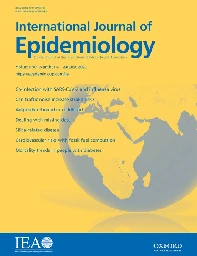
Identification and understanding of the role of silica in disease outside the lung have grown more slowly. Large mortality studies of silica-exposed populations have identified excess risk from renal disease and cardiovascular disease.
Of growing interest has been the role of silica in multisystem disease, notably rheumatoid arthritis, systemic sclerosis, systemic lupus erythematosus (SLE), small vessel vasculitis and others, in which autoimmunity is the unifying feature.
For SLE and small vessel vasculitis in men, there was arguably no dose-response trend beyond the ‘any silica’ threshold.
The multisystem nature of the silica hazard also has implications for medical practice. Specialists in fields other than respiratory medicine—renal medicine, dermatology and rheumatology—need to be on the alert, not least by taking a careful occupational history with knowledge of silica exposures.
Finally, autoimmunity widens the mechanistic complexity of silica toxicology. Variability in dose rate of silica, particle parameters such as size, charge and physicochemical structure, co-exposures and host factors require painstaking studies controlling for these variables to determine their joint effects. Such research has the potential not only to identify pathways to earlier identification and possible treatment of silicosis, but also to illuminate aspects of autoimmunity, tuberculogenesis and other disease processes.
Summary. There is a recognized association between silica exposure and Antineutrophil cytoplasmic antibodies (ANCA)-associated vasculitis (AAV); however, n
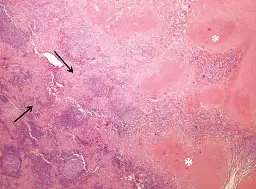
Key learning points
What is already known about this subject
Silica is known to be immunogenic and is associated with autoimmune diseases.
There is a known association between ANCA-associated vasculitis and silica exposure, although the exact mechanism of injury is not known.
There are only a few case reports describing the association of silica exposure and IgA nephropathy.
What this study adds
This is the first documented case report, to our knowledge, of co-existing ANCA-associated vasculitis and IgA nephropathy linked to hilar lymphadenopathy due to silica exposure.
This case highlights the relevance of occupation exposures in renal disease, and the immune-stimulatory effect of silica.
About half of cancer drugs approved via accelerated approval fail to improve patient survival or quality of life in subsequent clinical trials, according to data presented at AACR.
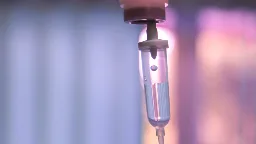
For decades, the Food and Drug Administration’s accelerated approval pathway has helped companies get drugs for serious unmet medical needs to patients — and the market — sooner. But about half of cancer drugs approved via this route fail to improve patient survival or quality of life in subsequent clinical trials after more than five years of follow-up, according to new findings presented Sunday at the American Association for Cancer Research annual meeting.
The data come from an analysis of cancer drugs granted accelerated approval over the past decade. In some cases, failure to show clinical benefit didn’t stop the FDA from converting accelerated approvals into full approvals, and the authors note the agency’s conversion decisions have increasingly been based on less stringent evidence of a drug’s benefits.

